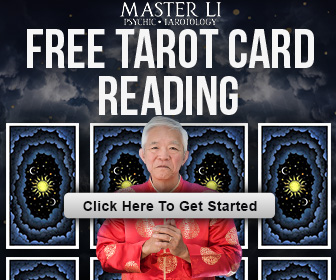Tarot cards have been a subject of fascination and debate, with many people turning to them for guidance and self-exploration. However, concerns about tarot card safety and potential risks have also been raised.
The use of tarot cards is not about summoning spirits, but rather a tool for communicating with one’s deeper wisdom. According to experts, tarot readings can help individuals gain fresh insights and understand complex situations.
To ensure a positive experience, it’s essential to approach tarot readings with a clear and pure intention. For more information on how to use tarot cards effectively, you can explore resources that discuss the benefits and potential pitfalls, such as understanding the risks associated with misinterpreting tarot card meanings or becoming overly reliant on the readings.
Additionally, learning about various tarot spreads can enhance your understanding and help you navigate life’s challenges with clarity.
Table of Contents
The History and Purpose of Tarot Cards
The origins of tarot cards are deeply rooted in European history, dating back to the 15th century. Initially used for playing card games, tarot cards have evolved significantly over time.
Origins of Tarot in 15th Century Europe
Tarot cards first appeared in Italy and France during the 15th century, where they were used for various card games. The earliest recorded use of tarot cards was in the 1440s in Italy. These early decks were hand-painted and featured allegorical and symbolic images.
As tarot spread throughout Europe, different regions developed their unique styles and interpretations. The Visconti-Sforza tarot deck, created in the mid-15th century, is one of the oldest and most renowned tarot decks.
Evolution from Card Games to Divination Tools
Over time, tarot cards transitioned from being used solely for entertainment to being used for divination purposes. By the 18th century, tarot had become associated with mysticism and occult practices. The French occultist Antoine Court de Gébelin was one of the first to link tarot cards to ancient Egyptian wisdom.
The use of tarot for divination gained popularity in the 19th and 20th centuries, with various interpretations and decks emerging. Today, tarot readers use a variety of decks, each with its unique symbolism and imagery.
How Modern Tarot Readings Work
Modern tarot readings involve interpreting the symbolism and imagery on the cards. Readers often use a specific spread, or layout, to answer questions or gain insight into a person’s situation. For those new to tarot, it’s helpful to start with simple spreads and explore the various interpretations available. You can find a comprehensive guide on questions to ask the tarot cards to deepen your understanding.
As noted by tarot expert
“Tarot is a tool for self-reflection and personal growth, offering insights into one’s past, present, and future.”
This perspective highlights the multifaceted nature of tarot readings, which can be both therapeutic and enlightening.
Are Tarot Cards Safe? Addressing Common Concerns
Tarot cards, with their rich symbolism and mysterious allure, have sparked concerns regarding their safety and potential effects on users. As the popularity of tarot readings continues to grow, it’s essential to address these concerns and provide a comprehensive understanding of the risks and benefits associated with tarot cards.
Physical Safety of Tarot Decks
From a physical perspective, tarot decks are generally safe to use. They are typically made of cardboard or cardstock and do not contain any hazardous materials. However, as with any object, there are potential risks if the cards are not handled properly. For instance, a tarot deck can be a fire hazard if left near an open flame or if the cards are used as a combustible material.
Moreover, some individuals may be allergic to certain materials used in the production of tarot cards, such as the ink or the coating on the cards. While rare, such allergies can cause skin irritation or other reactions upon contact with the cards.
Psychological Impact on Users
The psychological impact of tarot cards on users is a more complex issue. On one hand, tarot readings can be a powerful tool for self-reflection and personal growth, helping individuals to gain insights into their thoughts, feelings, and behaviors. Many users report feeling a sense of comfort and guidance from tarot readings, which can be particularly beneficial during times of uncertainty or stress.
On the other hand, some individuals may become overly dependent on tarot readings, using them as a crutch for decision-making rather than developing their own judgment and intuition. This dependency can lead to a loss of personal autonomy and potentially negative psychological effects.
Religious and Spiritual Perspectives
The religious and spiritual views on tarot cards vary widely across different cultures and traditions. Some view tarot cards as a tool for divination, while others see them as a form of entertainment or a way to tap into the subconscious mind.
Christian Viewpoints
Within Christianity, there are diverse perspectives on tarot cards. Some Christians view tarot cards as incompatible with their faith, seeing them as a form of divination that is condemned in the Bible. Others, however, may view tarot cards as a tool that can be used in a way that is consistent with their Christian beliefs, such as using the cards for meditation or reflection.
Other Religious Traditions
In other religious traditions, such as certain forms of paganism or occultism, tarot cards are often viewed as a legitimate tool for spiritual growth and self-discovery. These traditions may see tarot cards as a way to connect with the divine or to gain insight into the mysteries of the universe.
| Religious Tradition | View on Tarot Cards |
|---|---|
| Christianity | Varied views, ranging from condemnation to acceptance as a tool for reflection |
| Paganism/Occultism | Often viewed as a legitimate tool for spiritual growth and self-discovery |
| Other Traditions | Views vary, with some seeing tarot cards as a form of entertainment or a way to tap into the subconscious |
Scientific Perspective on Divination
From a scientific perspective, divination practices such as tarot card reading are generally viewed as forms of entertainment rather than as methods for predicting the future or gaining supernatural insight. While some studies have explored the psychological benefits of tarot readings, there is limited scientific evidence to support the idea that tarot cards can predict future events or provide supernatural guidance.
In conclusion, the safety of tarot cards depends on various factors, including how they are used and the beliefs of the individual using them. By understanding the potential risks and benefits, users can make informed decisions about their use of tarot cards.
Potential Risks of Tarot Card Reading
The practice of tarot card reading is not without its risks, including the potential for dependency, misinterpretation, and financial exploitation. While many people use tarot cards as a tool for self-reflection and personal growth, others may experience negative consequences.
Dependency and Obsessive Behavior
One of the potential risks of tarot card reading is the development of dependency or obsessive behavior. Some individuals may become so reliant on tarot readings that they struggle to make decisions without consulting the cards. This can lead to a loss of personal autonomy and decision-making skills. It’s essential for users to maintain a healthy balance between tarot guidance and their own intuition.
Misinterpretation and Self-Fulfilling Prophecies
Another risk associated with tarot card reading is the misinterpretation of the cards. If a reader misinterprets the cards or if the querent misinterprets the reading, it can lead to self-fulfilling prophecies or unnecessary anxiety. For instance, if a reading suggests a negative outcome, the individual may become so focused on this possibility that they inadvertently bring it about.
Financial Exploitation by Unethical Readers
The tarot industry is not regulated, which means that unethical readers can take advantage of vulnerable individuals. Some readers may charge exorbitant fees for their services or use manipulative tactics to keep clients coming back. It’s crucial for those seeking tarot readings to research the reader’s reputation and understand their pricing before committing to a session.
Impact on Mental Health and Decision-Making
Tarot card reading can also have an impact on mental health and decision-making processes. While some people find that tarot readings provide comfort and guidance, others may experience increased anxiety or uncertainty. It’s essential to approach tarot readings with a critical and nuanced perspective, recognizing that the cards are not a definitive predictor of the future.
By being aware of these potential risks, individuals can use tarot cards in a way that is safe and beneficial. It’s all about maintaining a balanced perspective and not relying too heavily on tarot readings.
Ethical and Beneficial Uses of Tarot
Tarot cards, beyond their mystique, offer a variety of positive applications that can be leveraged for self-reflection, creativity, and social connection. When used ethically, tarot can be a powerful tool for personal growth and community building.
Tarot for Self-Reflection and Personal Growth
One of the most significant beneficial uses of tarot is its ability to facilitate self-reflection and personal growth. By using tarot cards, individuals can gain deeper insights into their thoughts, feelings, and behaviors. This process can help identify areas for improvement and guide personal development. For those interested in exploring tarot for self-reflection, learning how to create your own tarot can be a valuable skill.
Creative and Artistic Applications
Tarot cards can also serve as a creative catalyst, inspiring artistic expression and imagination. Many artists, writers, and musicians use tarot as a tool for sparking new ideas and exploring different creative avenues. The symbolism and imagery on the cards can be particularly useful for those experiencing a creative block or seeking new sources of inspiration.
Community Building and Shared Experience
Tarot can play a significant role in tarot community building by providing a shared experience that brings people together. Participating in tarot readings, either as a reader or a querent, can foster connections and create a sense of belonging among individuals with similar interests. Tarot workshops, online forums, and local tarot groups are excellent ways to engage with others who share your passion for tarot.
Setting Healthy Boundaries with Tarot Practice
While tarot can be a valuable tool, it’s essential to establish healthy boundaries to ensure a positive and constructive practice. This includes not relying solely on tarot for decision-making, maintaining a balanced perspective, and being mindful of the potential for dependency or obsessive behavior. By setting these boundaries, individuals can enjoy the benefits of tarot while avoiding potential pitfalls.
By embracing the ethical and beneficial uses of tarot, individuals can harness the power of tarot cards to enhance their lives and the lives of those around them. Whether used for personal growth, creative inspiration, or community building, tarot can be a valuable and positive addition to one’s life.
Conclusion: Making Informed Decisions About Tarot
As we have explored, tarot cards have a rich history and diverse applications, ranging from divination tools to creative inspirations. Understanding the safety and ethics of tarot card reading is crucial for those considering this practice.
The potential risks associated with tarot cards, such as dependency and financial exploitation, must be weighed against their benefits, including self-reflection and community building. By acknowledging both aspects, individuals can make informed decisions about tarot that align with their personal values and needs.
To ensure a positive experience with tarot, it is essential to approach the practice with awareness and caution. This involves setting healthy boundaries, being mindful of the potential for misinterpretation, and seeking out reputable and ethical tarot readers. By doing so, individuals can harness the benefits of tarot while minimizing its risks, ultimately making informed decisions about tarot that support their well-being.
Ultimately, the safety and value of tarot card reading depend on the context and intentions behind its use. By adopting a balanced and nuanced understanding of tarot cards, individuals can integrate this practice into their lives in a way that is both meaningful and safe, leading to a more informed conclusion about tarot card safety.


